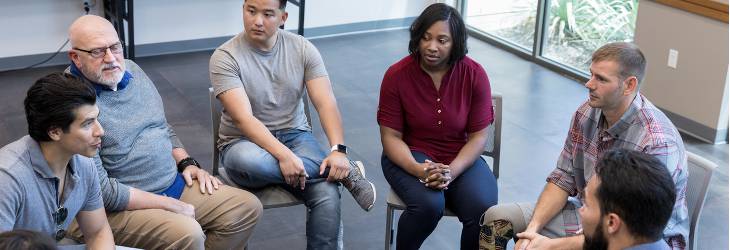Writing in her groundbreaking book, Health and the Rhetoric of Medicine, Judy Segal (2008) eloquently reiterated a claim made by generations of scholars – that the metaphor is “the most rhetorical of figures” and, citing Laurence J. Kirmayer, argued that “rhetoric uses metaphor to smuggle values into discourse that proclaims itself rational, even-handed, and value-free.” The use of metaphor in communication is so universal across the human experience that we sometimes ignore its reach and impact.
Indeed, in this article we highlight the potential of metaphoric criticism in Rhetorical Studies by further defining metaphor and its uses in rhetorical criticism, articulating its academic history, highlighting some prominent scholars that research the use of metaphor in various communicative contexts, and situating metaphoric criticism in today’s scholarly landscape.
Further Defining Metaphor
As mentioned in our article on Rhetorical Studies, the metaphor is considered to be a master trope in rhetoric, along with metonymy, synecdoche, and irony. “In the most important uses of metaphor,” Robert Ivie (1987) wrote, “a term (or ‘vehicle’) from one domain of meaning acts upon a subject from another domain,” ultimately creating meaning and understanding through their interaction. In other words, when a speaker employs a metaphor, they are using a tool of comparison – a way of “seeing something in terms of something else” (Burke, 1941).
Although the comparison may be between two disparate concepts – metaphor utilizes a common experience and thought to help explain a potentially uncommon experience, thought, or concept, bringing out “the this-ness of a that, or the that-ness of a this” (Burke, 1941). For example, in an enduring metaphor from one of William Shakespeare’s plays, he compares the world and our lives to that of a stage and a play – “All the world’s a stage…and all the men and women merely players.” In hearing this metaphor, the listener employs their own experiences and thoughts, aiding in the metaphor’s explanatory power.
While Shakespeare’s beautiful use of language certainly sets a high bar when thinking about metaphors, most metaphors occupy a vastly simpler realm. As tools of comparison, metaphors often need to be plain, accessible, and memorable for their maximum potential to be realized in most audiences. Indeed, rhetors sometimes employ metaphors without much thought, tapping into salient and shared experiences effortlessly. Oftentimes, however, rhetors purposefully utilize metaphors to better connect with their audience, solidify understanding, and further their arguments.
Featured Scholars Researching the Use of Metaphor in Rhetoric
The use of Metaphoric Criticism in Rhetorical Studies varies, often ebbing and flowing with the political, cultural, and scholarly fluxions of the time. With that, there are some scholars that have utilized Metaphoric Criticism more often than others. In this section, we feature a combination of scholars that employed Metaphoric Criticism throughout their careers, helping to solidify its foundation in the discipline, and others who engaged in this type of rhetorical criticism more sparingly or from a different perspective altogether, but nonetheless contributed to the scholarship in important ways.
In the realm of Metaphoric Criticism, Dr. Ivie is perhaps best known for his essay “Metaphor and the Rhetorical Invention of Cold War ‘Idealists,’” in which he provides a template for revealing and understanding metaphor in public address and analyzes Cold War rhetoric. Currently Professor Emeritus at Indiana University, Dr. Ivie is a National Communication Association Distinguished Scholar and has served as the editor of the Quarterly Journal of Speech, Western Journal of Communication, and Communication and Critical/Cultural Studies. Additionally, Dr. Ivie examines American political and war rhetoric, his most recent book with Oscar Giner, Hunt the Devil: Demonology of U.S. War Culture, employing extensive Metaphoric Criticism to explore how Americans utilize demonic imagery in war to rhetorical construct opponents as the Devil.

Although not a Communication scholar in a traditional sense, Dr. Lakoff’s research continues to be crucial to rhetorical scholarship pertaining to metaphor and public address. Dr. Lakoff’s position as Professor of Cognitive Science and Linguistics at the University of California at Berkeley helped foster research from neuroscience, psychology, Communication-based social sciences, and neural linguistics. As mentioned above, Dr. Lakoff’s work with Mark Johnson in Metaphors We Live By rooted the use of metaphor in language to thought. Elsewhere, Dr. Lakoff’s work with metaphor continues to be applied to politics and philosophy.

Like Dr. Lakoff, Dr. Johnson is not a Communication scholar by trade, but his work is influential to metaphor scholars of all stripes. Now Professor Emeritus in the Department of Philosophy at the University of Oregon, Dr. Johnson investigates theories of metaphors in relation to the Philosophy of Language. In Metaphors We Live By, Dr. Johnson provided the philosophical perspective in articulating the omnipresence of metaphor and its connection in thought, language, and behavior. In addition to his work with metaphor, Dr. Johnson examines American Pragmatist philosophy and Moral Theory and Ethics.

Dr. Butterworth’s research examines “the connections between rhetoric, democracy, and sport, with particular interests in national identity, militarism, and public memory” (“Michael Butterworth,” 2017). As such, Dr. Butterworth frequently employs Metaphoric Criticism in his work. Perhaps his best-known contribution to Metaphoric Criticism is his essay entitled “The Politics of the Pitch: Claiming and Contesting Democracy through the Iraqi National Soccer Team.” Now the Director of the Center for Sports Communication and Media at UT Austin, Dr. Butterworth continues applying his communication research to the unique medium that sports provide.

Due to Dr. Darsey’s status as a prolific scholar of rhetoric, narrowing his decades of research down into a couple of sentences is, admittedly, difficult. Dr. Darsey has written about religious rhetoric (most notably in his book The Prophetic Tradition and Radical Rhetoric in America), social movement and LGBT rhetoric, and the demagogue Joe McCarthy. Writing in a commemorative Southern Communication Journal issue for Dr. Osborn’s contributions to the study of metaphor, Dr. Darsey examined the archetypal metaphor of the journey in then-candidate Barack Obama’s campaign rhetoric in his essay “Barack Obama and America’s Journey.” Dr. Darsey recently earned Professor Emeritus status at Georgia State University where he teaches courses on Rhetorical Theory and Criticism as well as courses examining the connection between Text & Context in Rhetorical Studies.
The History of Metaphoric Criticism in Rhetorical Studies
Although Metaphoric Criticism was a part of neo-classical criticism, its focus was on the ways in which speakers utilized the metaphor stylistically. The modern metaphoric critic, however, “believes metaphors are more than superficial ornamentation: they are the means by which arguments are expressed” (Burgchardt, 2010). Indeed, rhetorical critics examining the use of metaphor in discourse typically focus on “describing, evaluating, and understanding” metaphors as they may reveal a “speaker’s motives or an audience’s social reality” (Burgchardt, 2010).
While Wichelns (1925) and Wrage (1947) helped situate our contemporary understanding of rhetoric and certainly laid a scholarly foundation for the modern metaphoric critic to build upon, it was Osborn and Ehninger’s (1962) essay, “The Metaphor in Public Address,” that many scholars point to as the beginning of our contemporary understanding of the use of metaphor in rhetorical discourse. Osborn’s (1967) follow-up landmark essay, “Archetypal Metaphor in Rhetoric: The Light-Dark Family,” cemented our modern understanding of metaphor and became a staple in the study of Communication. Osborn’s (1967) essay highlighted the staying power of certain metaphors across time, culture, and space, ultimately arguing that archetypal metaphors are salient in the human experience and their use in rhetorical discourse wields significant persuasive potential.
In 1980, George Lakoff and Mark Johnson published Metaphors We Live By, again altering the scholarly conversation regarding the use of metaphor in discourse. Now considered a foundational text for rhetorical scholars studying metaphor, Lakoff and Johnson reaffirmed in Metaphors We Live By that the use of metaphors in discourse is not a fleeting stylistic choice made by rhetors, but added, in groundbreaking fashion, that metaphors actually structure our thought processes. In short, they argued, metaphors intricately link thought and language, and shape our everyday lives so profoundly that it is difficult to think and act without metaphor.
Studying Metaphoric Criticism Today
Despite a rich scholarly backing, many pundits, columnists, and even some scholars regularly deride the use of metaphor in public address. Oftentimes, this derision is based on a genuine desire to see public address move to what they see as a higher form of oratory. Perhaps more than we would like to admit, however, this derision is often rooted in elitist thought, a misplaced sense of what ought to be, rather than an acceptance of what is. The derision aside, “speaking for one thing in terms of another is the norm rather than the exception in rhetorical discourse” and its use in the 21st Century continues to adapt, change, and grow with the times (Ivie, 1987).
Without question, the study of metaphor in various discourses is growing. In Science and Health Communication contexts, scholars from several different methodological perspectives study the use of metaphor in topics as ranging and varied as doctor-patient communication regarding disease and treatment to healthcare advertisements on television. Indeed, this context provides Metaphoric Critics in Rhetorical Studies the opportunity to work with their counterparts in the social sciences, engaging in meaningful qualitative work.
For example, after IRB approval, one could interview patients about their interactions with doctors to discern which metaphors were used and when and in what context. Or, again pending IRB and other relevant institutional approval, one could interview doctors and other healthcare professionals and ask about their use of metaphor in explaining disease and treatment.
Elsewhere, a Metaphoric Critic in Rhetorical Studies could examine how medical support groups utilize metaphor to reach new members and treat current members. Here, a critic could not only reveal which metaphors are employed, but also what they do for both the person using the metaphor and the person hearing the metaphor. Then, the critic could make an argument about larger cultural uses and impact.
In all, Metaphoric Criticism continues to be an essential tool in the rhetorical critic’s toolbox. Students looking to further study and employ Metaphoric Criticism ought to begin with reading the works of the scholars featured in this article and continue to utilize the comprehensive list of programs and interviews available on MastersinCommunications.com in choosing their degree path.
Sources and Additional Resources
To learn more about the use and analysis of metaphors in rhetoric, check out the following resources:
- Burgchardt, C. R. (2010). Readings in Rhetorical Criticism (Fourth). Strata Pub.
- Burke, K. (1941). Four Master Tropes. The Kenyon Review, 3(4), 421–438. Retrieved from www.jstor.org/stable/4332286
- Butterworth, M. L. (2007). The Politics of the Pitch: Claiming and Contesting Democracy Through the Iraqi National Soccer Team. Communication and Critical/Cultural Studies, 4(2), 184–203. https://www.tandfonline.com/doi/abs/10.1080/14791420701296554
- Darsey, J. (2009). Barack Obama and America’s Journey. Southern Communication Journal, 74(1), 88–103. https://www.tandfonline.com/doi/abs/10.1080/10417940802571151
- Ivie, R. L. (1987). Metaphor and the rhetorical invention of cold war “idealists.” Communication Monographs, 54(2), 165–182. https://www.tandfonline.com/doi/abs/10.1080/03637758709390224
- Michael Butterworth [Text]. (2017, August 15). Retrieved from Communication Studies | Moody College of Communication website: https://commstudies.utexas.edu/faculty/michael-butterworth
- Osborn, M. (1967). Archetypal Metaphor in Rhetoric: The Light-Dark Family. Quarterly Journal of Speech, 53(2), 115–126.
Additional Topics on Research in Rhetorical Studies

This guide provides an in-depth discussion of rhetorical studies, describing the history and significance of the discipline while also providing readers with theories that are useful to understanding different forms of rhetoric and their functions in human communication.

This article discusses the field of critical rhetoric and its importance in the examination and exposure of power dynamics in society. It also provides information on key scholars in the field who study how rhetoric connects to equality, politics, and cultural values.

This detailed article discusses the history and forms of gender criticism in rhetorical studies, and also explains the political, social, and cultural significance of this field of study.

This article provides an overview of genre criticism in rhetorical studies, and how it has evolved over the centuries. It also explains the influential work of scholars in this field of study.

This article explores scholarly approaches to understanding persuasion as material. Explore how scholars have attempted to understand rhetorical discourse as a material thing, and, on the other hand, how material things, like monuments and roads, can be politically persuasive.

This article covers narrative criticism and the role it plays in culture, politics, and relationships, while also providing examples of prominent scholarship in this field.

This article examines the history and impact of social movement rhetorical research, and provides readers with a detailed overview of some of the latest research in the field that is being completed by eminent scholars of social justice and civil rights rhetoric.


